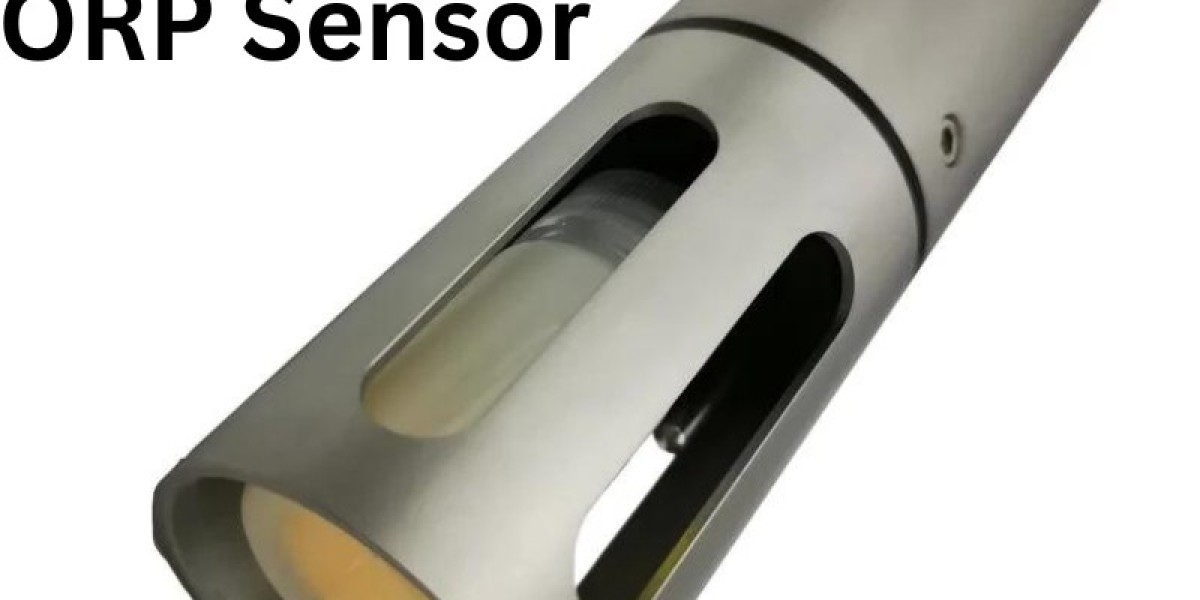These ORP sensors measure the ability of water to either release or accept electrons during chemical reactions, providing invaluable insight into the water’s overall condition.
What is ORP?
At its core, ORP refers to the tendency of a chemical substance to either gain or lose electrons. This measurement helps determine whether a substance is more likely to oxidize (lose electrons) or reduce (gain electrons). For example, in water treatment, ORP sensors can detect the level of disinfectants like chlorine or ozone, which work by oxidizing harmful microorganisms, ensuring safe and clean water.
ORP values are measured in millivolts (mV), and the readings can indicate the water's chemical environment. A positive ORP value indicates an oxidizing environment, while a negative value suggests a reducing environment. For water systems, keeping track of ORP is vital to ensure proper disinfection levels and prevent undesirable chemical reactions.
How Do ORP Sensors Work?
ORP sensors are designed with electrodes that detect the oxidation and reduction reactions occurring in the water. The sensor typically consists of a reference electrode and a measuring electrode. The measuring electrode reacts with the ions in the water and produces a voltage that is directly proportional to the ORP of the water. This voltage is then transmitted to a monitoring system for analysis.
The readings from ORP sensors can provide valuable data on water quality, especially in real-time scenarios. By continuously measuring the ORP level, operators can adjust water treatment processes, such as adding disinfectants, to ensure the desired chemical balance.
Applications of ORP Sensors
ORP sensors are used in a variety of industries, each with specific needs for maintaining water quality:
Water Treatment Plants: In municipal water systems, ORP sensors help manage the dosing of chemicals such as chlorine or ozone to disinfect water. By maintaining the proper ORP level, these sensors ensure the water is safe for consumption without excess chemicals.
Aquaculture: In fish farming, maintaining the right ORP level is essential for preventing the growth of harmful bacteria and pathogens. Aquatic environments require precise control over disinfection levels to protect fish health and ensure water quality.
Swimming Pools and Spas: Pool operators use ORP sensors to monitor the effectiveness of sanitizers like chlorine. This helps maintain a clean and safe swimming environment, while also preventing overuse of chemicals, which can be harmful to swimmers.
Industrial Applications: In industries that require water in their processes, such as food processing or pharmaceuticals, ORP sensors help maintain proper water treatment. These sensors ensure that water is not only free from contaminants but also suitable for manufacturing purposes.
Environmental Monitoring: ORP sensors are also employed to monitor water bodies such as lakes, rivers, and oceans. By analyzing ORP levels, scientists can gain insight into the health of these ecosystems, identifying potential pollutants or changes in water chemistry that might signal environmental issues.
Benefits of Using ORP Sensors
The use of ORP sensors offers several benefits:
Real-time Monitoring: ORP sensors provide continuous, real-time data, allowing for immediate adjustments to the water treatment process.
Improved Water Quality: By maintaining optimal ORP levels, water treatment systems can achieve better disinfection and chemical balance, leading to improved water quality.
Cost Efficiency: Accurate ORP measurements help optimize chemical dosing, reducing the use of expensive chemicals and preventing overuse, which can result in additional costs.
Environmental Protection: By ensuring proper chemical treatment, ORP sensors help prevent the release of harmful substances into the environment, promoting sustainability.
Conclusion
In conclusion, ORP sensors are indispensable tools for anyone concerned with water quality, whether it’s for industrial, municipal, or environmental purposes. Their ability to monitor and control oxidation-reduction reactions in water ensures that water remains safe, clean, and balanced. With a wide range of applications and clear benefits, ORP sensors have become essential for maintaining optimal water quality and enhancing the efficiency of treatment processes across many industries.



